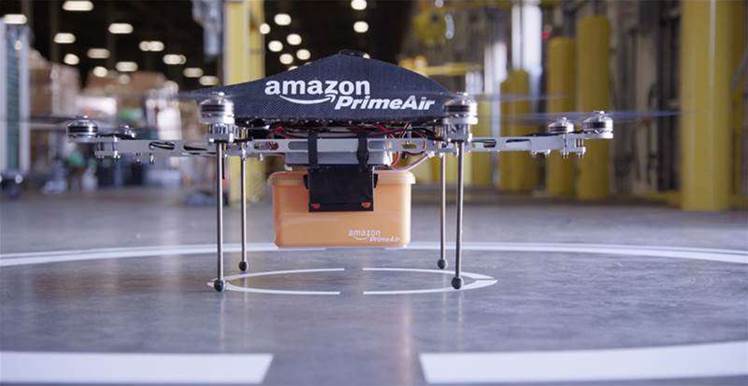The US aviation regulator has proposed rules for commercial drone flights that would lift some restrictions but would still bar activities such as the delivery of packages and inspection of pipelines.

The long-awaited draft rules from the Federal Aviation Administration would require unmanned aircraft pilots to obtain special pilot certificates, stay away from bystanders and fly only during the day. They limit flying speed to 160 kph per hour and altitude to 152 metres above ground level.
The rules also say pilots must remain in the line of sight of its radio-control drone, which could limit inspection of pipelines, crops, and electrical towers that are one of the major uses envisioned by companies.
The FAA acknowledged the limitation but said those flights could be made possible with a secondary spotter working with the pilot of the drone.
"This rule does not deal with beyond line of sight, but does allow for the use of a visual observer to augment line of sight by the operator of the unmanned aircraft," FAA Administrator Michael Huerta said.
The draft rules, nearly 10 years in the making, still must undergo public comment and revision before becoming final, a process expected to take at least a year.
If they survive in their current form, they are likely to hinder Amazon in its quest to eventually deliver packages with unmanned drones.
The rules require an FAA-certified small drone pilot to fly the aircraft and keep it in line of sight at all times - factors not envisioned in the online retailer's plan.
"We don't consider or contemplate in this rule carrying packages outside of the aircraft itself," Huerta also said.
Amazon's vice president of global public policy, Paul Misener, said the proposal would bar the company's delivery drones in the United States. Misener also urged the FAA to address the needs of Amazon and its customers as it carried out its formal rulemaking process.
"We are committed to realising our vision ... and are prepared to deploy where we have the regulatory support we need," Misener said in a statement.
Other countries have taken a more permissive stance towards delivery drones. In September, logistics firm DHL said its use of drones to drop off packages to residents of a German island was the first such authorszed flight in Europe.
Rules expected to evolve
Huerta, who said the agency had tried to be "flexible" in writing the rules, said a framework had been set and would evolve based on discussions with industry and technology developments.
The rules continue current restrictions against filming of crowds by news organisations, but Huerta said he expected those procedures to be developed as part of discussions with news groups.
Separately, US President Barack Obama issued a memo outlining principles for government use of drones, covering such issues as privacy protections and oversight of federal drone use.
The FAA's draft rules appeared less onerous in some aspects than the industry had been worried about. There had been concern, for example, that they would require drone operators to attend a flight-training school and obtain a certification similar to that of a manned aircraft pilot.
Commercial drone operators would need to be at least 17 years old, pass an aeronautical knowledge test and be vetted by the Transportation Security Administration. But they would not need to undergo the medical tests or flight hours required of manned aircraft pilots.
The Association for Unmanned Vehicle Systems International (AUVSI), praised the draft, with the group's president, Brian Wynne, calling it a "good first step in an evolutionary process."
But privacy advocates were concerned there were not enough limits on when law enforcement agencies would be permitted to use drones for surveillance.
The proposal "allows the use of data gathered by domestic drones for any 'authorised purpose', which is not defined, leaving the door open to inappropriate drone use by federal agencies," said Neema Singh Guliani, legislative counsel at the Washington legislative office of the American Civil Liberties Union.



.png&h=140&w=231&c=1&s=0)






 iTnews Executive Retreat - Security Leaders Edition
iTnews Executive Retreat - Security Leaders Edition












_(1).jpg&h=140&w=231&c=1&s=0)




